'Daredevil' Season 2: Inside That Bone-Breaking Fight Scene
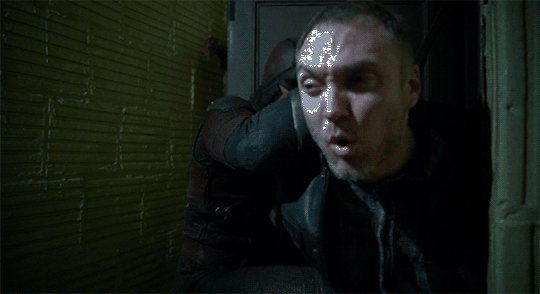
Warning: This article contains spoilers for the third episode of Daredevil Season 2.
If you’re looking for the precise moment where Netflix’s hit series Daredevil threw down and demonstrated that it wasn’t going to be like any other superhero show, jump straight to the last scene of the second episode. There, you’ll be greeted by an epic three-minute, one-take hallway battle where the titular hero (Charlie Cox) takes on a squadron of goons despite being pretty battered and beaten himself. Designed by the show’s fight coordinator, Philip Silvera, and his longtime collaborator, Roberto Gutierrez, the sequence is a marvel of action and camera choreography, equaling and even surpassing some of the set-pieces in some of Marvel’s big-budget movies.
Related: Ken Tucker Reviews ‘Daredevil’ Season 2
Heading into Season 2, Silvera knew that fans would be expecting a battle royale to equal or surpass that hallway brawl. And in episode 3, “New York’s Finest,” they’ll get it. Having been captured and lectured on the proper way to deal with criminals by the new vigilante on the black, the Punisher (Jon Bernthal), Daredevil manages to free himself from his chains and knocks the gun-toting ex-soldier unconscious instead. But his will is further tested when he realizes there’s a biker gang headed their way who definitely have murder on their minds. Dumping the Punisher’s prone body in an elevator, the hero turns to face the oncoming rush of bad guys…in another hallway.
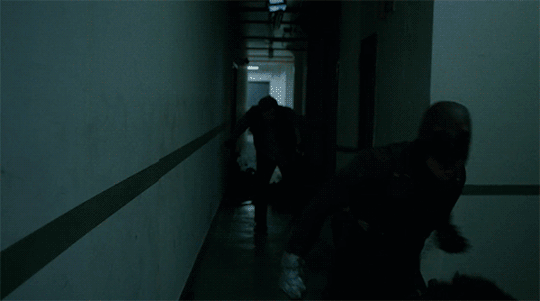
Speaking with Yahoo TV, Silvera says he didn’t intend to return to the scene of the previous season’s standout fight sequence. “Originally, I was hoping that we wouldn’t repeat it, because it was unique to that episode’s story,” he says. But the Season 2 hallway fight shouldn’t be mistaken for a mere repeat. For one thing, Daredevil literally has his hands full during the fight: one carries a gun that the Punisher duct-taped to his palm, while the other holds the chain that used to be wrapped around his chest. And the punching doesn’t stop when he reaches the end of the hallway: instead, he continues the fight down a stairwell — the camera once again appearing to capture the action without any cuts — and into a basement room bathed in red light where he faces a final batch of opponents. “I wanted it to feel like we were starting somewhere familiar, like ‘Here we are in another hallway!’” Silvera says, laughing. “And then we go a different way with it.”
Clocking in at a super-sized eight minutes, the sequence further burnishes Daredevil’s reputation as the new standard bearer for comic book action on TV. And according to Silvera, showrunners Doug Petrie and Marco Ramirez came up with a compelling metaphor to underline all the bad-assery. “They pitched me the idea that this particular fight is a descent into hell for Daredevil. He’s been challenged by the Punisher to not cross the line [between hero and villain], and you see him riding that line all the way down the stairs. There are times when you think he might cross it, because he gets pretty brutal.”
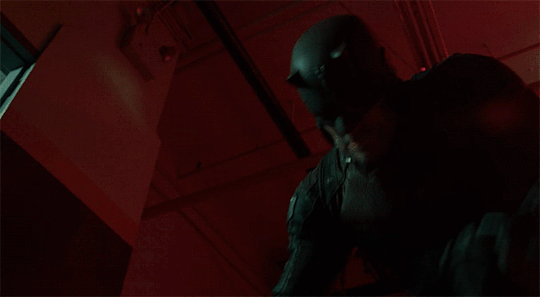
Silvera filled us in on the way this sure-to-be-talked-about sequence came together and how he found himself in the midst of the action as the cameraman. (And by the way binge-watchers, he cites episodes 9 and 11 as his personal favorites.)
Last season’s hallway battle was filmed in one take without any cuts — this one seemed to have a few edits hidden in the action.
It’s definitely done differently. There might have been a little bit of whip pan [tricks] going on here and there, and some Texas Switches [where a stunt double replaces the actor while the cameras are still rolling]. So the purity of the last one and this one is different. We had to be able to do things technically with this fight in order to give it that feeling of going down the staircase.
How long did it take to shoot?
If I tell you how many days, it would give away the secret! [Laughs] I can tell you it took three full days of prep this time around, whereas last time I had two-and-a-half days.
Putting the gun and chain in Daredevil’s hands changes the tenor of the fight — he can do more damage this time.
Oh yeah; he’s basically got a metal hammer in one hand and a set of brass knuckles on the other. Charlie and I talked about the way the gang members don’t know that the gun is empty, but the way he pushes it out puts a sense of fear into them. And then he pulls the trigger and it clicks! It’s just a different way of messing with them. I really love that moment. The other thing, too, is that he was more wounded when he got into the previous hallway battle. So there’s a different energy to how he approaches this one. We don’t see him getting full-on tired the way he did before; he’s got a real anger and determination this time and he has to stay in the moment.
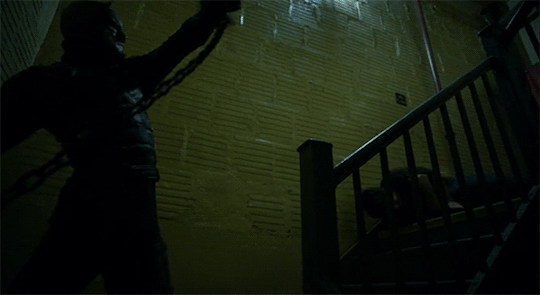
Most fight sequences maintain a horizontal axis, so it’s really invigorating to see one that unfolds vertically.
It was a big undertaking. We had to make smart decisions, like “Is the camera leading or the action leading and the camera is catching up?” The camera was mostly handheld, and there are certain sequences where we’re lowering it or handing it off to another person as they’re going down so we can stay constantly in motion. We were in a real building in Long Island City, so these were tight spaces. And we put some pads on the walls because some of the stunt guys are flying down the staircase, and falling on top of each other.
Were there any blown takes where the cameraperson got clipped by a mistimed punch?
I was the cameraman for the staircase sequence; I was able to become a second unit director this season, and they entrusted me to shoot and direct some of these action sequences. And it’s a danger to be that close to the action for the performers as well as the cameraman. It’s such a confined space, so every move is very specific. As the cameraman, you have to step back a certain way, and you have to make sure the camera can see the action, but be out of their way at the same time. It’s a very specific dance, and you’ve got a very short amount of time to get that dance. There was moment at the bottom of the staircase, where I might have tripped over some of the guys’ legs and just kept going! [Laughs] I had to stay in the moment with them. These guys are putting it all out there, and you don’t want one thing to go wrong and have to do it again.
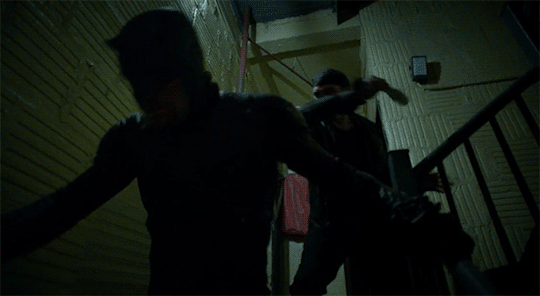
With one season under his belt, is Charlie Cox doing more of his own fighting this time around?
Charlie has a great physical memory for things, and gets better and better. He works 24/7 as the lead of the show, so he gets very little time to rehearse with us, but you see him in there more and feel his emotions in the fight a lot more this season. He’s one of the first people who gets the pre-visualizations of the fight sequences, and studies them and we rehearse with him on set. But his stunt double, Chris Brewster, and the other stunt guys worked for three days non-stop. Chris is under the gun as much as Charlie in some ways. He has to make sure he’s up to par with Charlie’s ability, and then gets beat up and beat around during these sequences and has to do another one the next day!
What discussions go into planning the fight choreography for a scene like this? Are you thinking about which specific marital arts disciplines to highlight with every punch?
The discussions are more like, “How can I strike if my hand is taped to a gun? I can’t grab you, so maybe I’ll wrap the gun around your head.” We try to find the practicality of what Daredevil can do. And we try to remember that he has [heightened senses]. In an early version of the staircase fight, we had a gang member fire a gun at him, and then he’d evade the bullet and smack the gun out of his hand. But Charlie does a great job at keeping us honest, so he reminded us that he’d be able to anticipate that guy coming and would swing at him earlier. So you work that sense of anticipation into his choreography.
Were there discussions about ending the sequence after the stairway? That final round in the red room is brutal, but it’s a more traditional fight. No, there was always going to be one more trial. That represented his full descent into hell, and we would see him either become a devil or stay where he’s at. Doug and Marco were smart with how they wrote it, and we just tried to match that idea as we best we could. It was definitely a relief to be on level ground again!
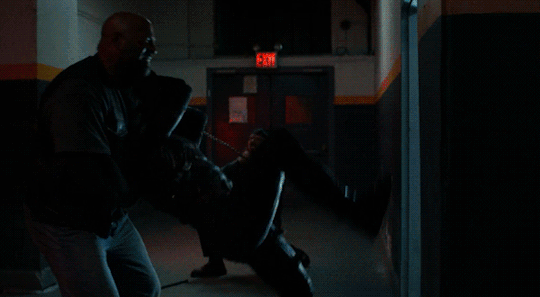
Should Netflix order a third season, are you worried with how you’re going to top yourself next time around?
I don’t really worry too much about trying to top myself. I just want to match the story the writers are telling, and within those stories, find something unique to do with the action. If I just worry about doing something different, I don’t know if they’ll relate to the story and that’s what sets these sequences apart — they let us tell the story of these characters [through action], which is great.
Season 2 of Daredevil is currently streaming on Netflix

